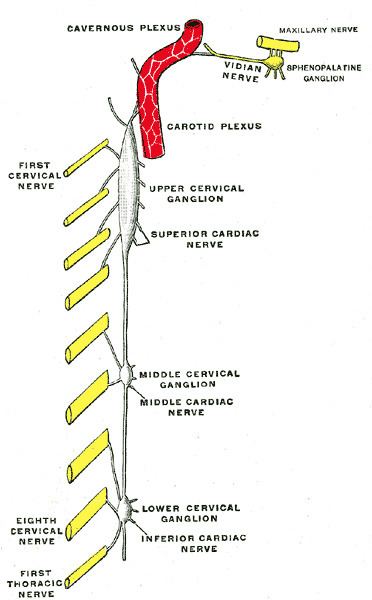Latin Ganglion cervicale | ||
 | ||
The cervical ganglia are paravertebral ganglia of the sympathetic nervous system. Preganglionic nerves from the thoracic spinal cord enter into the cervical ganglions and synapse with its postganglionic fibers or nerves. The cervical ganglion has three paravertebral ganglia:
Nerves emerging from cervical sympathetic ganglia contribute to the cardiac plexus, among other things. Unlike all other ganglia, the medial branches of the cervical ganglia are 95% postganglionic axons.
References
Cervical ganglia Wikipedia(Text) CC BY-SA
